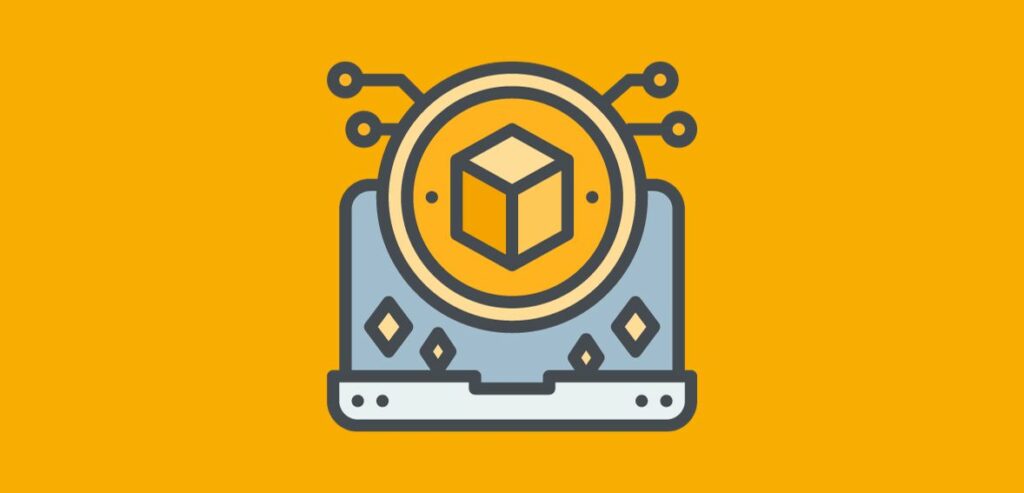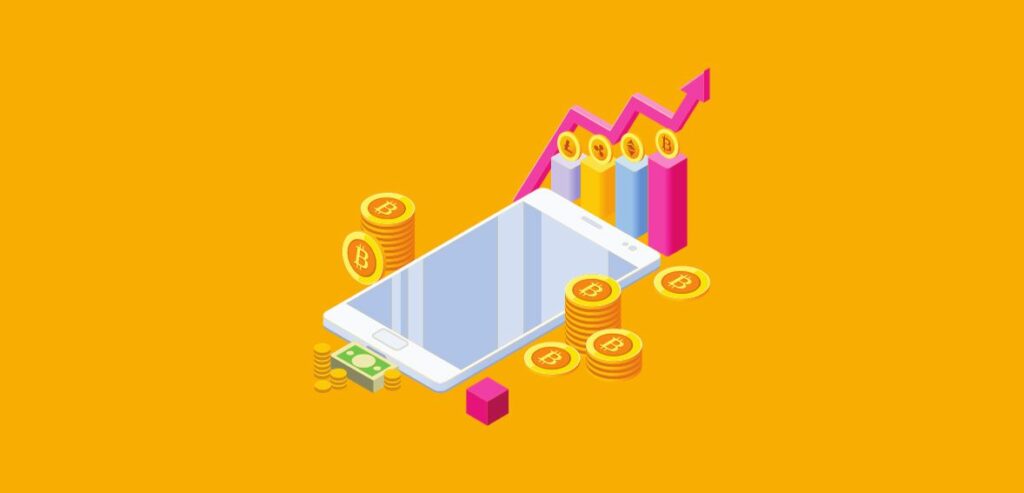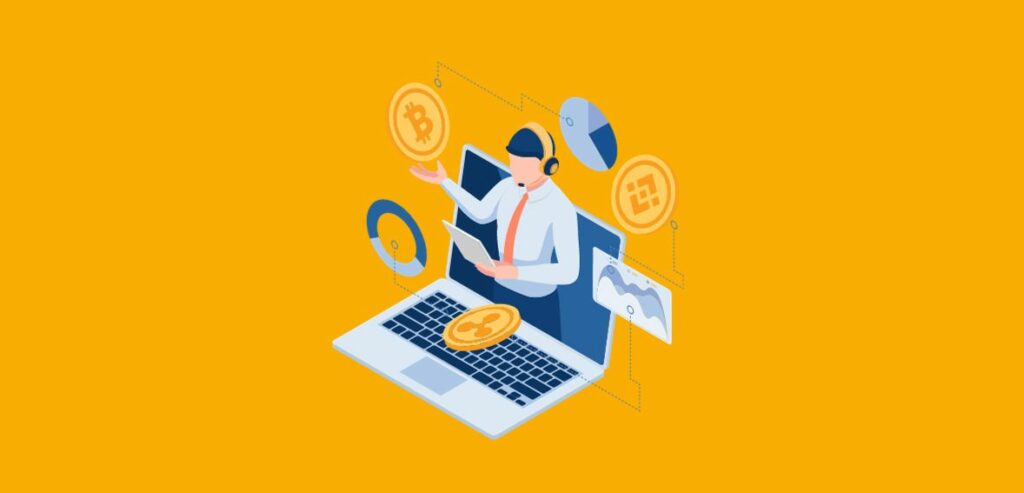Digital or virtual currencies have gained popularity over the years. They have completely transformed our perception of money and transactions. Today we will delve into the world of blockchain cryptocurrencies exploring their definition, potential future uses, as well as, their advantages and disadvantages.
Defining Blockchain Cryptocurrencies
Blockchain cryptocurrencies often referred to as cryptocurrencies are forms of virtual currencies that rely on blockchain technology for secure and decentralized transactions. Unlike currencies, like the US dollar or Euro issued by governments, blockchain cryptocurrencies exist solely in a format.
At the core of cryptocurrencies lies a distributed ledger called the blockchain. This technology enables unchangeable record-keeping for all transactions conducted using a cryptocurrency. Each transaction is verified by participants within the network to ensure its validity and prevent fraud.

What truly sets apart cryptocurrencies from financial systems is their decentralized nature. Of being controlled by an authority such, as a bank or government these currencies are collectively managed by users who participate in the network.
Decentralization brings about security. Eliminates the need, for middlemen in financial transactions.
Bitcoin, introduced in 2009 was the pioneer in implementing a blockchain-based cryptocurrency. Since then numerous other cryptocurrencies like Ethereum, Ripple, Litecoin, and more have emerged with their features and applications.
Where Can Blockchain Cryptocurrencies Be Used In The Future
The underlying technology of cryptocurrencies has opened up opportunities across various industries beyond finance. Smart contracts powered by blockchains have the potential to automate agreements between parties without relying on intermediaries or legal enforcement. This can be a game changer for fields such as supply chain management and real estate.
Looking ahead there are possibilities and potential applications for cryptocurrencies. Finance and payment processing is one area where they can make an impact. By leveraging technology traditional banking systems can be revolutionized through transactions, reduced costs, and enhanced security.
Another promising use case for cryptocurrencies lies in supply chain management. With the help of blockchain, businesses can establish immutable records that document every stage of a product journey from production to delivery. This not only ensures authenticity but also combats fraud and counterfeiting.
Furthermore, healthcare is another domain where blockchain currencies could play a role. By storing data on a decentralized network medical professionals can access accurate information efficiently while maintaining patient privacy.
Moreover the automation of insurance claims processing, through contracts powered by blockchain can bring about simplification to the healthcare system.
In the field of entertainment and intellectual property rights blockchain cryptocurrencies present opportunities for artists to safeguard their creations and receive compensation without relying on intermediaries.
Additionally, governments across the globe are exploring the use of currencies in voting systems due to their provision of transparency, security, and immutability that traditional methods lack.
As we delve deeper into exploring the possibilities of cryptocurrencies further research will undoubtedly unveil more innovative applications across various industries worldwide!
Benefits Of Blockchain Cryptocurrencies

Blockchain cryptocurrencies offer numerous advantages that distinguish them in the world of finance and digital transactions. One key advantage is decentralization, which means that no single entity controls the system. This eliminates the need for intermediaries like banks resulting in reduced transaction costs and increased efficiency.
Another benefit lies in transparency. The use of technology in cryptocurrencies enables a ledger where all transactions are recorded and can be verified by anyone on the network. This helps prevent fraud and fosters trust, among users.
Furthermore, blockchain cryptocurrencies ensure security through cryptography. Transactions conducted using these currencies are. Become unalterable once recorded on the blockchain.
Blockchain technology provides a level of security making it difficult for hackers or unauthorized individuals to gain access.
Furthermore compared to banking systems that often involve processes and high fees blockchain cryptocurrencies enable faster cross-border transactions. Regardless of boundaries, transactions can be completed within minutes or even seconds.
In addition, to its applications blockchain technology holds the potential to revolutionize industries like supply chain management healthcare recordkeeping, and voting systems. By offering a tamper-proof and transparent platform for data storage and verification it can bring about changes.
The advantages of cryptocurrencies include decentralization, transparency, security, fast cross-border transactions, and diverse applications beyond finance. These benefits make them an attractive choice for individuals and businesses seeking efficient and secure transactions. Moreover, their potential impact on industries should not be underestimated.
Drawbacks of Blockchain Cryptocurrencies

However, there are also some drawbacks associated with cryptocurrencies;
1. Scalability Issues; One major limitation is the scalability of cryptocurrencies. As the number of transactions increases so does the size of the blockchain. This can pose challenges, in processing and verifying transactions quickly. This may result in transaction times and higher fees.
2. Energy Consumption; Another concern is the energy consumption associated with cryptocurrencies.
The process of mining which involves verifying and adding transactions to the blockchain requires an amount of computational power and electricity. This has led to concerns that cryptocurrencies, like Bitcoin may have impacts.
One issue with blockchain-based cryptocurrencies is the lack of regulation. Because they operate outside frameworks due to their decentralized nature it creates opportunities for illegal activities such as money laundering and fraud although some people appreciate the privacy and autonomy this offers.
Another challenge is the volatility of these cryptocurrencies. Their values can fluctuate dramatically within periods due to factors like market speculation or news events. This makes them less reliable as a medium of exchange or store of value.
Conclusion
In conclusion, blockchain cryptocurrencies have emerged as a technology with the potential to transform industries in the future. They offer benefits such as transparency, immutability, and efficiency thanks to their secure nature.
However, it’s crucial to acknowledge that there are also drawbacks associated with these currencies. The high volatility and regulatory uncertainties pose risks for both investors and businesses. Additionally, scalability issues need to be addressed along with concerns about energy consumption, for adoption.
Despite these challenges, it is undeniable that blockchain cryptocurrencies hold potential.
As more and more organizations realize the value of decentralization and look for ways to streamline their processes blockchain technologies are likely to play a role, in shaping our future.
Blockchain cryptocurrencies hold promise in areas such as facilitating cross-border transactions without intermediaries or enabling secure sharing of data across industries like healthcare or supply chain management. They have the potential to create an ecosystem that’s more transparent and efficient.
To stay up to date with the developments in technology it is crucial for individuals to keep themselves informed. By understanding the applications of blockchain and being aware of both its benefits and limitations people can make informed decisions when interacting with blockchain cryptocurrencies.
In summary, embracing this transformative technology requires consideration of its implications while making use of its advantages. Blockchain cryptocurrencies have paved the way for an era of innovation where trust is established through the cryptography of traditional intermediaries. It’s time to embrace this shift because whether we like it or not blockchain cryptocurrencies are here, for the run!

